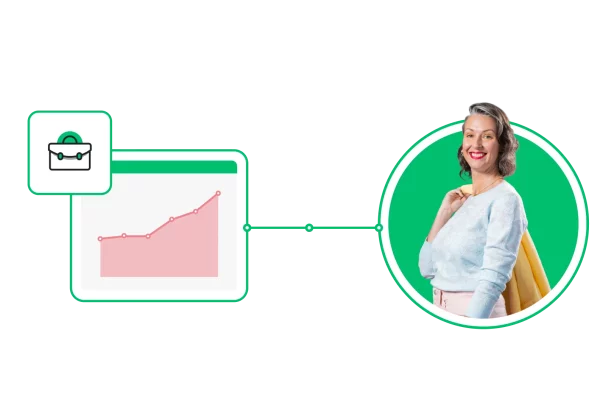Motivation vs. engagement: what's the difference?
Learn the difference between employee engagement and motivation, and discover concrete ways to encourage both within your workforce.

Motivated and engaged employees are essential to a company’s success and mission. However, understanding employee engagement and motivation can take time and effort.
Leaders hoping to improve staff morale and loyalty must recognize how these two factors are unique and encourage them separately.
What is employee engagement?
Employee engagement measures the enthusiasm and commitment a worker feels toward their job. When employees feel valued and appreciated, they’re more likely to take pride in their work and the organization's success. It's not just about earning a paycheck; these employees want to make a difference and contribute to the organization.
Research suggests a link between engaged employees and higher productivity, enhanced creativity, fewer sick days, and positive workplace relationships. On the other hand, employees who do not feel engaged in their work often turn to “quiet quitting,” which costs businesses $450 to $500 billion annually.
What is employee motivation?
Employee motivation is the driving force that pushes an employee to do their work. Motivated employees can be more committed, energized, and creative, adding to a positive company culture and fueling their dedication to their best work.
In understanding employee motivation, it's important to recognize two main types: intrinsic and extrinsic. Distinguishing between these forms and assessing which is most effective for employees is crucial in determining the best methods for rewarding them.
Intrinsic motivation vs. extrinsic motivation
Intrinsic motivation is the internal drive that compels a person to take action. When employees are intrinsically motivated, their work is inherently fulfilling. They may find personal satisfaction in overcoming challenges, completing projects, or contributing to meaningful goals. While this motivation is internal to each individual, it can be influenced by the organization's support (or lack thereof).
Extrinsic motivation refers to the external factors that drive individuals. These factors can be tangible and short-term, such as public employee recognition, or long-term, like pay bonuses and job promotions.
However, organizations should use external motivators strategically and sparingly to maintain effectiveness. For example, compensating employees for overtime during a temporary project may serve as a short-term motivator. However, as a long-term strategy, it can lead to burnout and diminish its impact.
Ideally, employers should use various motivation strategies, including extrinsic and positive motivators, while recognizing the need to create the right conditions for intrinsic motivation.
What’s the difference between engaged employees and motivated employees?
Engagement and motivation do not always coincide. A highly motivated employee might not always engage in their work. This employee may be able to complete their tasks and fulfill their responsibilities but seek more engaging opportunities.
Conversely, an engaged employee who lacks motivation may have strong relationships with their colleagues or support the company's mission but might not perform at their best or contribute effectively.
Although different, engagement and motivation are essential to a team's success. Investing in practices that ensure employees are engaged and motivated can make a huge difference in a company's performance.

Benefits of motivated and engaged employees
Overall, the benefits of having motivated and engaged employees include:
Increased productivity
Motivated and engaged employees are more likely to strive to complete projects and address issues because it gives them job satisfaction.
These employees want to reach their business goals and contribute positively to the team. They’re also willing to search for creative solutions to the team's challenges, further streamlining workflows and enhancing productivity.
Reduced employee turnover
The more engaged and motivated employees are, the more likely they will be loyal to the company and stick around to invest their time and skills. They’re also more likely to help recruit new candidates to the organization.
Positive work environment
Passion for work and positivity in the workplace contribute to the general culture the team experiences on a day-to-day basis. This can help improve employee experience, which boosts retention, loyalty, and dedication.
Better customer service
The more individuals enjoy working for the company, the more this comes across to customers and prospects. Genuine enthusiasm for the business and passion for projects are easily translated from internal teams to external customers, integrating themselves into client and customer interactions.
Motivated and engaged employees put high effort into their work and take pride in doing a good job, and this can translate to better prospect calls, customer service, client touchpoints, and general interactions, further contributing to return on investment and business goals.
How to measure employee engagement
While it is essential to understand employee engagement strategies, leaders must first find ways to measure employee engagement across their teams. Here are a few ways to measure employee engagement:
Performance reviews
Regular performance review surveys are an excellent way for employers to assess employee progress and output. They can also collect feedback on employee engagement and overall satisfaction.
Companies can also use stay-interview surveys to stay ahead of employee turnover and uncover their employees’ overall job satisfaction and commitment to the company.
Employee feedback surveys
Outside of performance reviews, there are other types of employee feedback surveys specifically created to help companies collect input from employees regularly:
- Employee engagement surveys are great tools for employers to determine how employees feel about their engagement, motivation, and career development.
- The employee Net Promoter Score (eNPS) survey measures employees’ engagement and satisfaction by calculating a score based on how likely an employee is to recommend the company to others.
- Pulse surveys are short, easy to fill out, and can be sent more frequently than a comprehensive annual survey. Organizations can customize a pulse survey each time, allowing teams to send them out as needed and for timely issues or changes.
Employee engagement software
Employee engagement software helps companies track employee satisfaction and engagement through features like recognition systems, communication platforms, feedback collection, and engagement analytics.
Employers can use this software to track employee participation and engagement over time, highlighting trends of potential decline or burnout and mitigating these before they become larger issues.

How to measure employee motivation
Employers often face a significant challenge in measuring their employees’ motivation precisely because it varies greatly from person to person. While it can be somewhat easier to define what motivates each small team member, this becomes a significant obstacle on a larger team that might be split across different geographic locations.
For instance, research has shown that while work-life balance may be the most important benefit for most employees, others rank job security, salary, and flexible working as the most important motivators for the workplace. It is crucial that employers take the time to use different tools and resources to understand what motivates each person on their team fully.
Some ways to measure employee motivation include:
Absenteeism and turnover rates
Monitoring employee output can strongly indicate motivation levels within a company. These types of general employee surveys can help monitor employee motivation levels across periods, so should there be a decline in satisfaction or motivation, employers can step in early and be proactive about implementing changes.
Interviews and 1:1s
Interviews can provide direct, qualitative feedback that you can use to gain deeper insights into employee sentiments, needs, and wants.
One-on-one interviews can also feel safer for employees to be truthful with their feedback, often leading to meaningful action sourced directly from employee suggestions.
Employee feedback surveys
Employee motivation surveys are just one example of these employee feedback surveys companies can use to find out how employees feel about their jobs and learn what employers can do to improve the employee experience.
Boost employee engagement and motivation with SurveyMonkey
Motivated and engaged employees contribute positively to any company and can help increase job satisfaction, creativity, and productivity. Ensuring your employees are motivated and engaged is critical to meeting business goals, increasing revenue, and keeping customers happy.
Learn how SurveyMonkey can improve employee engagement among your team today.
Discover more resources

HR toolkit: Make employee experience your competitive advantage
HR leaders can use this toolkit to help drive exceptional employee experiences.

State of Surveys: Top trends and best practices for 2025
Watch this webinar to explore 2025 survey trends, mobile insights, and best practices for optimizing your survey strategy.

How Americans feel about the Costco DEI policy: 25+ stats and 10 tips
68% of Americans back Costco’s DEI commitment. Explore 25+ stats on public sentiment around Costco, DEI policies, and the anti-DEI movement.

How to get more out of your employee engagement surveys
Learn how to design, analyze, and apply employee engagement surveys to drive meaningful change and improve workplace culture.